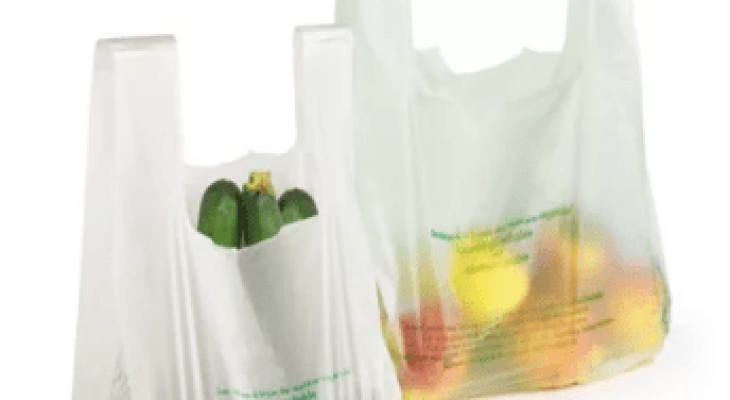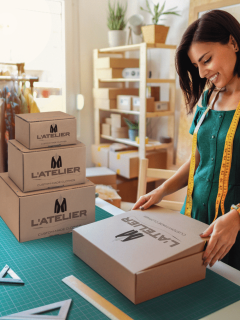Shipping packaging in the medical and pharmaceutical sector differs from other packaging due to the requirements involved in transporting healthcare products. Medical shipping must adapt to the temperature, light or sterility requirements of your medicines and medical devices. What are the challenges of shipping packaging in the medical sector? How do you choose a suitable packaging? Discover our solutions for successful picking in the healthcare industry.
Shipping packagingin the healthcare industry: what’s at stake?
Pharmaceutical and medical packaging transports sensitive products with high health requirements. Several criteria must be taken into account in medical manufacturing, packaging and shipping packaging as well as logistics. They aim to ensure that flawless, safe goods arrive at the end user or reseller, such as pharmacies. To define and ensure these criteria, there are several legal guidelines and regulations. Among others, these include:
For holders of a manufacturing authorisation for medicinal products, the following apply
- AMWHV (Ordinance on the Manufacture of Medicinal Products and Active Pharmaceutical Ingredients)
- EU GMP Guideline (Good Practice in the Manufacture of Medicinal Products)
For companies that have a wholesale permit, the following apply
- Pharmaceutical Trade Ordinance (Ordinance on Wholesale Trade and the Distribution of Medicinal Products)
- GDP-Guideline (Good Distribution Practice – guidelines for the good distribution of medicinal products for human use)
By the way: The instructions formulated here also apply to veterinary medicine
Basics of the GDP guideline for transport packaging and shipping for medical devices
The sections of the GDP relevant to shipping and logistics can be found primarily in chapters 5 and 9. Roughly summarised, the following requirements are necessary for optimal medical shipping:
The safety and integrity of medicines during transport are of paramount importance to ensure that products maintain their quality and efficacy. As a wholesale authorisation holder, the responsibility lies with the supplier to take the necessary measures to protect medicines from breakage, deterioration and theft. To do this, it must be made clear which medicines and pharmaceuticals are being transported and that they have not been opened without authorisation.
In addition, it is essential that temperature conditions remain within an acceptable range throughout transport. The chosen method of transport (vehicle, equipment, temporary storage, etc.) must be such that the supplier is able to demonstrate that the medicinal products have not been exposed to any conditions that could affect their quality or integrity.
What do you need to look out for when shipping medicine and pharmaceuticals?
In order to meet all the challenges mentioned in the GDP, the choice of the right packaging material is essential. However, the real responsibility starts with the packaging process and only ends AFTER delivery.
Preparing the medical shipping packaging in the warehouse
In the pharmaceutical industry, precise specifications apply to hygienic cleanliness – even during the picking phase:
- Disposable gloves or chemical protective gloves may be worn in your picking warehouse and during the packaging process. These gloves not only protect the products, but also your logistics staff.
- Remember to provide your staff with disinfectants.
- Antiseptic wipes are the right product for you to effectively clean surfaces that come into contact with medical or pharmaceutical products.
- You can require your staff to wear a bonnet, beard protector or gown to prevent contamination in the packages.
- Depending on the products being packaged (especially if they could be corrosive, toxic or otherwise of toxicological concern), safety labelling to prevent health risks or floor markings to indicate safety distances or areas where high-risk products are handled may be useful.
Safeguarding and clear labelling of medical devices
To ensure the safety of pharmaceutical products, the packaging must be tamper-proof. There are various options, such as tamper-evident labels that are stuck on the flap of the carton or screw caps that can be used to determine whether a product has already been opened. Containers can also be closed with numbered seals or sealed with security labels.
You also need to know what is inside the packaging at all times. Therefore, it is important that the packaging can be labelled or has labels indicating the contents.
Strapping tape additionally protects boxes from unauthorised opening. Wet adhesive tape cannot be removed without leaving residue, so it is easy to track whether a package has been opened.
Clear labelling must also be provided on delivery. According to GDP chapter 5, all medical deliveries must be accompanied by a document (e.g. the delivery note) containing at least the following information:
- Date,
- Name and pharmaceutical form of the medicinal product,
- batch number of the medicinal product (at least in the case of medicinal products bearing safety features),
- quantity supplied,
- name and address of the supplier,
- name and delivery address of the consignee (in this case the actual address of the storage premises, if this is not the same address), and
- any transport and storage conditions required (such as refrigeration temperature, etc.).
Records (tracking) should be kept in such a way that the actual storage location of a product can be identified at any time.
Packaging medicines: Containers and packaging for medicinal products and medical devices
Plastic such as HDPE (high density polyethylene) has the advantage of being insensitive to chemicals and other liquids. This is why packaging made of HDPE is often chosen to transport liquids or powders:
- A plastic safety bottle is ideal for transporting and storing chemicals in the form of pastes, powders or gels. The screw cap is tamper-proof to ensure the safety of your products. Made from HDPE plastic, this bottle is strong and leak-proof.
- A plastic canister with a large opening is suitable for transporting solid, pasty as well as powdery products. The lid is screwed on and ensures that the canister is liquid-tight and airtight.
The contents can be marked with individual labels and hazardous goods stickers.
Sealed film bags for toxic medicines or sterile medical products
In the pharmaceutical industry, it is essential to select packaging that ensures the sterility of the product during transport, e.g. from the factory to hospitals. When it comes to products that need to be injected into humans, medical cutlery or material (such as human tissue or samples) that needs to be analysed, there must be no foreign particles! Maintaining a sterile environment is essential. For example, a sealed bag can keep medical tools sterile before use, e.g. in the operating theatre or clean room.
The right packaging for the cold chain
Medicines are often sensitive to temperature fluctuations.This includes especially those that require cooler storage. But also in general, medicines should not be stored above a certain temperature, as this could have an impact on the active ingredient. You and the supplier must therefore ensure that the correct temperature conditions are maintained throughout transport. This may require the use of special thermal boxes, cold packs, thermal bags or temperature-controlled transport containers. But innovative materials such as insulating bubble wrap or, if a room temperature is to be maintained, paper pads are also suitable to prevent the package from overheating, especially in summer. In addition, temperature monitoring systems should be used to ensure that the medicines remain within an acceptable temperature range during transport.
Caution: If you want to use cold packs, you should make sure that there is no moisture or freezer burn in the medicine shipping package. Medicines should not get wet under any circumstances. Therefore, make sure that you also use good moisture protection.
Dangerous goods packaging for medicine
Are medicines dangerous goods? Not necessarily. In general, medicinal products are subject to the Medicinal Products Act and medical devices to the Medical Devices Act. In addition, the Hazardous Substances Ordinance may apply to hazardous substances. In this case, the package must be specially secured and labelled according to the appropriate dangerous goods class before shipment.
This is particularly the case for toxic, radioactive, highly flammable or corrosive substances. However, medical samples that could potentially be infectious or toxic and therefore pose a health risk to humans and animals are also regulated in dangerous goods class 6 . For some medicines, such as cytostatics, special caution is required.
Bettersafe than sorry: In general, we recommend paying close attention to the correct dangerous goods packaging and labelling for medical products and medicines. In this way, you make an important contribution to protecting your employees, the shipping service providers, the customers and the environment. What’s more: even minor violations can be punished with a fine.
Padding and breakage protection for medical products
To ensure safe shipping of your medical devices and medicinal products, it is also important to properly cushion the goods. These requirements can also be found in the GDP directive under: Maintaining the integrity of the product. Especially if you are planning to ship several products together, cushioning is important. Medicines in blister packs are less sensitive than, for example, glass jars, bottles or fragile medical cutlery. The latter can also be packed in a padded bag. Bottles and jars are ideally wrapped in flexible corrugated cardboard protection or wrapping paper. In general, bubble w rap or flexible void fill is also recommended.
If your medicines, samples or the like require refrigerated shipping, you should think about suitable moisture and corrosion protection in addition to an insulated box and cold packs. When shipping liquid hazardous goods, absorbent material that also acts as padding protection is particularly practical.
Shipping medicines and medical products
Shipping service providers should also adhere to the GDP guidelines. This is particularly important if cold chains have to be maintained. Certain service providers have therefore committed themselves to medical refrigerated shipping and shipping under dedicated GDP guidelines. There are also special pharmaceutical logistics solutions, express shipping of important or perishable medicines and direct-to-patient options tailored to end customers.
Providers include UPS Healthcare and DHL Medical Express.
Digression: Important questions on the shipping of medicines
Are you allowed to send medicines as a private person?
Are you allowed to send medicines by post? No. Prescription medicines and pharmacy-only medicines may NOT be placed on the market by private individuals. This includes sending them by post. In order to be allowed to send prescription medicines and pharmacy-only medicines, you need a permit from the competent authority. This is issued to pharmacies, among others. Food supplements etc., which are not considered medical products, can be sent without hesitation.
How can you recognise a reputable mail-order pharmacy?
To recognise a reputable online pharmacy, an EU-wide safety logo has been introduced for mail-order sales. In addition, the imprint should be complete and the licensing authority should be named. Special caution applies to orders from abroad. In the worst case, these may be counterfeit medicines.
















